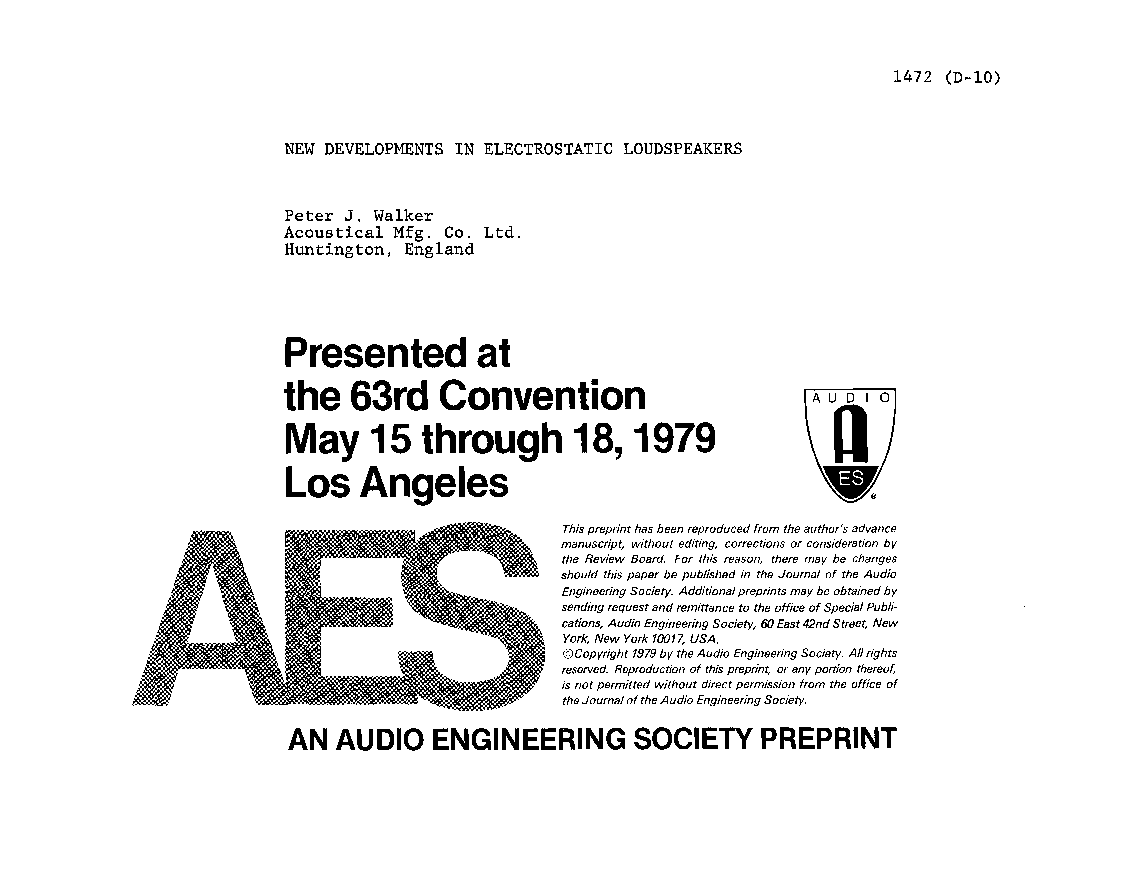Home / Publications / E-library page
You are currently logged in as an
Institutional Subscriber.
If you would like to logout,
please click on the button below.
Home / Publications / E-library page
Only AES members and Institutional Journal Subscribers can download
An `ideal` loudspeaker can be imagined, perhaps as some form of pulsating or vibrating sphere, neither of which is practicably realizable with precision if any reasonable power output is required. Suppose, however, we were to plot the air particle velocity components normal to a plane interposed between an imaginary ideal source and the observer. If we now substitute a plane surface with the same distributed velocity pattern, it follows (if the surface area is sufficiently large) that a replica of the curved wavefronts would be created and we would have an accurate acoustic `picture` of our ideal source for any position of the observer. What is meant by sufficiently large? What happens if the area is restricted to practical dimensions? A new look at electrostatic loudspeakers shows that these problems can be solved and the concept capable of realization with a high degree of precision.
Author (s): Walker, Peter J.
Affiliation:
Acoustical Mfg. Co. Ltd., Huntington, England
(See document for exact affiliation information.)
AES Convention: 63
Paper Number:1472
Publication Date:
1979-05-06
Import into BibTeX
Permalink: https://aes2.org/publications/elibrary-page/?id=2882
(485KB)
Click to purchase paper as a non-member or login as an AES member. If your company or school subscribes to the E-Library then switch to the institutional version. If you are not an AES member Join the AES. If you need to check your member status, login to the Member Portal.

Walker, Peter J.; 1979; New Developments in Electrostatic Loudspeakers [PDF]; Acoustical Mfg. Co. Ltd., Huntington, England; Paper 1472; Available from: https://aes2.org/publications/elibrary-page/?id=2882
Walker, Peter J.; New Developments in Electrostatic Loudspeakers [PDF]; Acoustical Mfg. Co. Ltd., Huntington, England; Paper 1472; 1979 Available: https://aes2.org/publications/elibrary-page/?id=2882